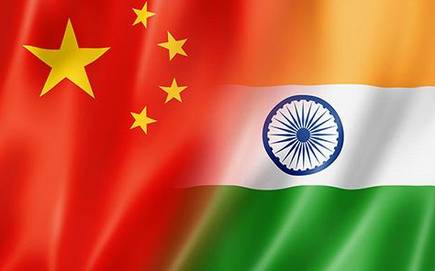India, China should consider buffer zones on LAC, hotline: Ex-PLA officer
Zhou wrote both sides should dust off previously agreed confidence-building measures

By PTI
A retired Chinese military official has proposed that China and India should implement the existing confidence-building measures and follow up by taking the “boldest step” of establishing “buffer zones” in the “most dangerous areas” along the Line of Actual Control (LAC) to prevent the border dispute spilling over into a conflict.
In an article titled China and India should look back to move forward on border impasse in the Hong Kong-based South China Morning Post newspaper on Tuesday to mark the first anniversary of the Galwan valley border clash between Indian and Chinese troops, retired senior colonel Zhou Bo of the People’s Liberation Army said, “the deadly incident was dreadful in that it came closest to breaking a decades-old tacit agreement between the two countries not to use force”.
In the first deadly clash in the border area in nearly five decades, 20 Indian soldiers were killed on June 15 last year in the Galwan valley in fierce hand-to-hand combat with Chinese troops, triggering a large deployment of troops and heavy weaponry by both armies at the friction points in eastern Ladakh.
In February, China officially acknowledged that five Chinese military officers and soldiers were killed in the clashes with the Indian Army though it is widely believed that the death toll was higher.
Significantly, Zhou, who is a senior fellow at the Centre for International Security and Strategy at Tsinghua University in Beijing, chose to publish the article containing his proposals to defuse the tension in a Hong Kong media outlet instead of China’s official media.
“A year after the shock of a fatal border clash, tensions remain high with no consensus on how to resolve the issues over an unverified LAC,” he noted.
“The aftermath is still being felt today. Beijing was given the cold shoulder when it offered to help pandemic-devastated India. Such resentment speaks volumes of the frosty relationship,” he pointed out.
“To prevent conflict, both sides should dust off previously agreed confidence-building measures and enforce the less-contentious ones,” he suggested.
It has been more than a year since the military standoff between China and India erupted in eastern Ladakh on May 5, 2020 during which there were fatalities on both sides. The two sides have made limited progress in achieving disengagement at the Pangong Lake area while negotiations for similar steps at other friction points remained deadlocked.
In his lengthy article, Zhou, while addressing the question “how to prevent the dispute from spilling over into a conflict,” did touch upon India’s demand for withdrawal from the remaining areas of eastern Ladakh.
“The way forward is to look back. Between 1993 and 2013, China and India reached four agreements on confidence-building measures at governmental and military levels. This is more than any bilateral agreements China has signed with other countries. And they are substantive, too, which is impressive,” Zhou noted.
The four agreements India and China signed in that period included the 1993 Agreement on the Maintenance of Peace and Tranquility along the LAC and the 1996 Agreement on Confidence-Building Measures in the Military Field along the LAC.
In the agreements, both the countries “reaffirm that they shall reduce or limit their respective military forces along the LAC to minimum levels,” Zhou points out.
“If only these measures were being implemented. In fact, both sides are strengthening their military presence in the region. This is no surprise in the wake of a crisis. But when the situation cools down, both countries will have to think about how they can best make the border areas peaceful and tranquil,” he noted.
“Perhaps the boldest step might be to establish buffer zones in the most dangerous areas along the LAC. Without prejudicing their respective positions on the boundary question, this is the most effective way to disengage and prevent conflict,” he said.
“Both sides agree they shall not follow or tail patrols of the other side in areas where there is no common understanding of the LAC. Building buffer zones is a step further. And it is possible, too,” Zhou noted.
“From the mountains around Pangong Lake, a de facto buffer zone has already been established after the mutual withdrawal of troops,” he pointed out.
Another way is to resume the joint working group and ask the diplomatic and military experts working under it to find the “low-hanging fruits” in the confidence-building agreements, he said.
“New confidence-building measures could also be ushered in,” he said.
While the 11 rounds of corps commander-level talks helped to de-escalate the situation, “such regular meetings of front-line senior military officers should be maintained,” he suggested.
Both sides should also consider establishing hotlines for real-time communication, he said, pointing out that China has military hotlines with Russia, the United States, South Korea and Vietnam.
“India often uses its hotline with Pakistan. There is no reason the two immediate neighbours with territorial disputes should not have similar instruments,” he said.
“Since the Line of Actual Control in the border areas is not demarcated, it is not rare for face-offs between Chinese and Indian troops,” he said.
“The complexity of the China-India border dispute is daunting. Even the length of the border is not necessarily agreed on. China believes it is 2,000-km-long, while India believes it is 3,488-km,” he pointed out.
“It is ridiculous if, in the 21st century, Beijing and New Delhi are still hijacked by a dispute that is a colonial remnant, not least because apart from this dispute, they have no outstanding problems with each other,” Zhou said.
“Gone are the days when India said Hindi Chini bhai bhai,” Zhou noted. “But China and India have every reason not to become foes. The border issue should not be a perennial curse. The two nuclear neighbours can ill-afford even a conventional war,” Zhou added.